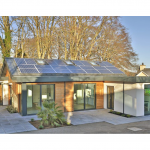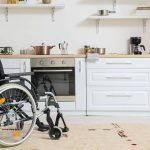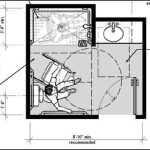95% of people aged 65 years and above prefer staying in their homes and aging in place to relocating to nursing homes or other long-term care facilities.
Living in your home comes with many benefits. However, to enjoy the comfort, safety, and privacy that every person needs, the house must be renovated to accommodate a person’s advanced age and limited physical abilities. This has been called aging in place.
It turns out that there is a disconnect between the perception of aging in place and the reality that many design features can enhance the livability of a home for all ages and abilities. In other words, aging is not a prerequisite for design intended to help people remain in their homes with ease of living over a lifetime. For this reason, the emerging and more expansive term that is replacing “aging in place” is living in place.
Living in place turns where you live into a lifelong home. This way you – or your loved one – don’t have to relocate to an assisted living facility during the sunset years. Or you or your loved one can remain in the comfort of home with a chronic illness or a disability. As the adage goes, “There’s no place like home.”
This raises the inevitable question: will the adaptations needed to live in place cost more than assisted living?
Economic Costs of Assisted Living
A Genworth Financial Study puts the national median monthly cost of assisted living care at $4,000 a month, and depending on location and care needs it can reach upwards of $10,000 month. This translates to $48,000-$120,000 annually. This price is much higher for nursing home care.
Assisted living also comes with the additional moving costs of relocating to an assisted living facility. The cost of hiring movers depends on many factors, such as whether the person is moving across state lines, the number of belongings being transported, and whether large or delicate objects will be moved.
Economic Costs of Living in Place
The cost of living in place, on the other hand, is a two-part expense. It includes one-time expenses for renovations and remodeling as well as yearly (or recurring) expenses.
Recurring expenses include food, utilities, maintenance, taxes, and hired help. On average, these expenses amount to between $2,400 and $24,000 annually depending on the individual’s level of care needs.
The average cost for basic design and structural modifications needed to live in place is between $12,000 and $16,000 per one-story residence. Obviously, the cost of modifying a home to make it suitable for aging in place may vary based on individual needs and preferences, and whether a new addition or new construction is chosen.
Nevertheless, for a budget-minded individual, there are several ways of financing the home improvement. Notable sources of financing include:
- Home renovation loans
- Reverse Mortgages
- Government loans and grants
- Home equity loans
- Home equity lines of credit
Sometimes, when it’s practical for a family member to spend personal time and energy helping an elderly or disabled relative, living in place may all but negate the cost of hiring professional caregivers to do such things as cooking, shopping, cleaning, and caring for their loved ones. On top of making the individual feel loved and wanted by their family, a family caregiver is able to do far more than a paid caregiver could because they’ll be doing it out of love.






